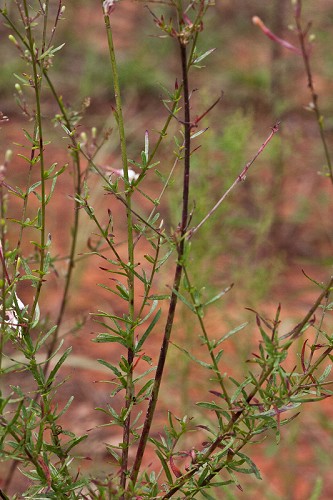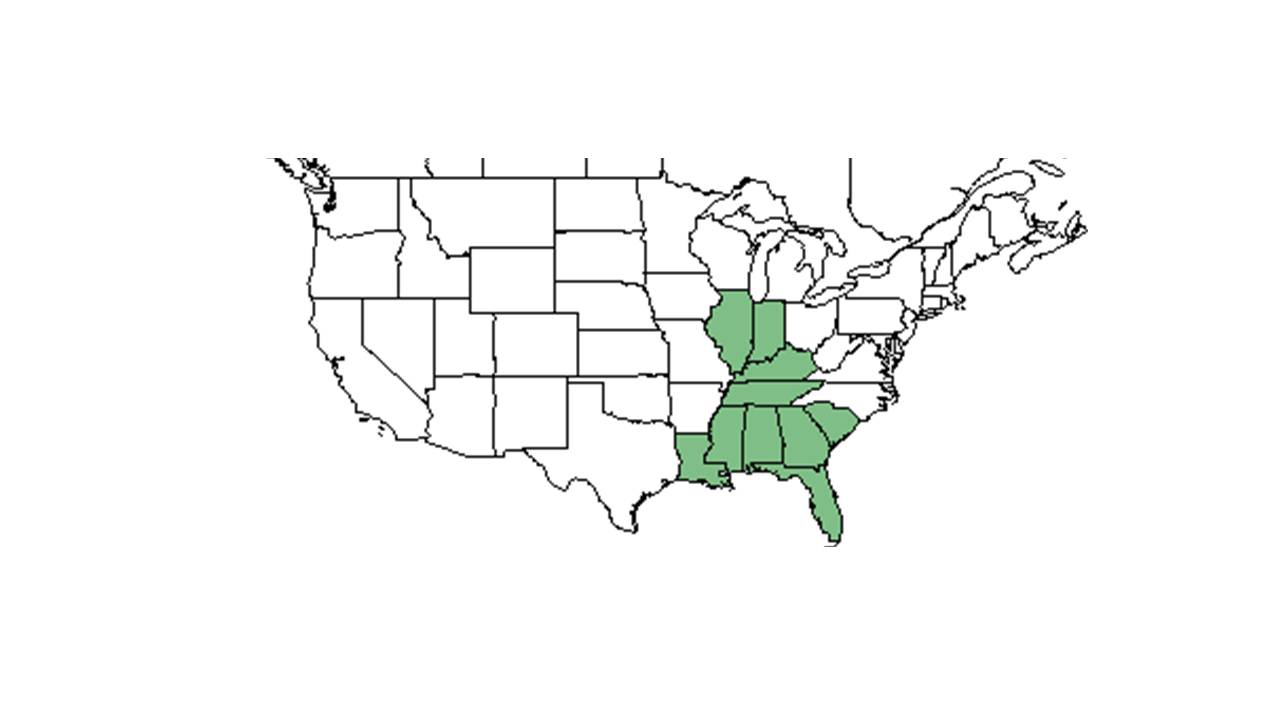Difference between revisions of "Oenothera filipes"
Laurenloria (talk | contribs) (→Seed dispersal) |
Lsandstrum (talk | contribs) |
||
| Line 33: | Line 33: | ||
==Ecology== | ==Ecology== | ||
===Habitat=== <!--Natural communities, human disturbed habitats, topography, hydrology, soils, light, fire regime requirements for removal of competition, etc.--> | ===Habitat=== <!--Natural communities, human disturbed habitats, topography, hydrology, soils, light, fire regime requirements for removal of competition, etc.--> | ||
| − | ''O. filipes'' occurs in dry or well drained sandy soils and sandy loam. <ref name="FSU Herbarium">Florida State University Robert K. Godfrey Herbarium database. URL: [http://herbarium.bio.fsu.edu http://herbarium.bio.fsu.edu]. Last accessed: June 2014. Collectors: Loran C. Anderson, Gary R. Knight, John B. Nelson, Robert K. Godfrey, E. Tyson, R. D. Houk. Ann F. Johnson, Wilson Baker, R. Komarek, MacClendons, and G. Wilder. States and Counties: Florida: Bay, Calhoun, Gadsden, Jackson, Leon, Liberty, Okaloosa, Santa Rosa, Wakulla, and Walton. Georgia: Thomas.</ref> It seems to be most common in areas that receive full sun or are only partly shaded. <ref name="FSU Herbarium"/> It can be found in longleaf pine flatwoods or sandhills, scrub oak barrens, pine-oak woodlands, and limestone glades. <ref name="FSU Herbarium"/> However, it can also appear in areas of disturbed habitat, including roadsides and common use recreational areas. <ref name="FSU Herbarium"/> Associated species include ''Pinus palutris, Solidago, Gaillardia, Polianthes, Berchemia, Dichromema, Setaria, Hedyotis, Schoenus nigricans, Muhlenbergia carpillaris,'' and ''Quercus laevis''. <ref name="FSU Herbarium"/> | + | ''O. filipes'' occurs in dry or well drained sandy soils and sandy loam. <ref name="FSU Herbarium">Florida State University Robert K. Godfrey Herbarium database. URL: [http://herbarium.bio.fsu.edu http://herbarium.bio.fsu.edu]. Last accessed: June 2014. Collectors: Loran C. Anderson, Gary R. Knight, John B. Nelson, Robert K. Godfrey, E. Tyson, R. D. Houk. Ann F. Johnson, Wilson Baker, R. Komarek, MacClendons, and G. Wilder. States and Counties: Florida: Bay, Calhoun, Gadsden, Jackson, Leon, Liberty, Okaloosa, Santa Rosa, Wakulla, and Walton. Georgia: Thomas.</ref> It seems to be most common in areas that receive full sun or are only partly shaded. <ref name="FSU Herbarium"/> It can be found in longleaf pine flatwoods or sandhills, scrub oak barrens, pine-oak woodlands, and limestone glades. <ref name="FSU Herbarium"/> However, it can also appear in areas of disturbed habitat, including roadsides and common use recreational areas. <ref name="FSU Herbarium"/> ''O. filipes'' responds negatively to soil disturbance by agriculture in Southwest Georgia.<ref>Kirkman, L.K., K.L. Coffey, R.J. Mitchell, and E.B. Moser. Ground Cover Recovery Patterns and Life-History Traits: Implications for Restoration Obstacles and Opportunities in a Species-Rich Savanna. (2004). Journal of Ecology 92(3):409-421.</ref> |
| + | |||
| + | Associated species include ''Pinus palutris, Solidago, Gaillardia, Polianthes, Berchemia, Dichromema, Setaria, Hedyotis, Schoenus nigricans, Muhlenbergia carpillaris,'' and ''Quercus laevis''. <ref name="FSU Herbarium"/> | ||
===Phenology=== <!--Timing off flowering, fruiting, seed dispersal, and environmental triggers. Cite PanFlora website if appropriate: http://www.gilnelson.com/PanFlora/ --> | ===Phenology=== <!--Timing off flowering, fruiting, seed dispersal, and environmental triggers. Cite PanFlora website if appropriate: http://www.gilnelson.com/PanFlora/ --> | ||
Revision as of 14:40, 15 July 2019
| Oenothera filipes | |
|---|---|

| |
| Photo by John R. Gwaltney, Southeastern Flora.com | |
| Scientific classification | |
| Kingdom: | Plantae |
| Division: | Magnoliophyta - Flowering plants |
| Class: | Magnoliopsida – Dicotyledons |
| Order: | Myrtales |
| Family: | Onagraceae |
| Genus: | Oenothera |
| Species: | O. filipes |
| Binomial name | |
| Oenothera filipes (Spach) W.L. Wagner & Hoch | |

| |
| Natural range of Oenothera filipes from USDA NRCS Plants Database. | |
Common name: Slenderstalk beeblossom
Contents
Taxonomic notes
Synonyms: Gaura filipes Spach; Gaura filipes var. filipes; Gaura filipes var. major Torrey & A. Gray; Gaura michauxii Spach
Description
Oenothera filipes is a perennial herbaceous species.
"Usually coarse, branched annuals or perennials. Leaves mostly alternate. Inflorescence terminal, spike-like, with or without axillary branches from upper leaves or bracts. Petals white to pink; stigmas 3-4 lobed. Fruit woody, indehiscent." [1]
"Plant to 1.5 m tall, stems pubescent. Leaves linear, elliptic or narrowly lanceolate, to 6 cm long and 6 mm wide, pubescent, glabrous, or puberulent, acute, coarsely toothed to undulate, attenuate; sessile or subsessile. Inflorescence diffusely branched, the branches uncinulate. Spelas and petals 4-7 mm long; anthers 1.6-2.5 mm long styles exerted 5-7 mm. fruits acutely 4-angled, ovoid, 3.5-4 mm long, 3-3.5 mm broad, minutely uncinulate to almost glabrous; pedicels 2-3 mm long, uncinulate."[1]
Distribution
Ecology
Habitat
O. filipes occurs in dry or well drained sandy soils and sandy loam. [2] It seems to be most common in areas that receive full sun or are only partly shaded. [2] It can be found in longleaf pine flatwoods or sandhills, scrub oak barrens, pine-oak woodlands, and limestone glades. [2] However, it can also appear in areas of disturbed habitat, including roadsides and common use recreational areas. [2] O. filipes responds negatively to soil disturbance by agriculture in Southwest Georgia.[3]
Associated species include Pinus palutris, Solidago, Gaillardia, Polianthes, Berchemia, Dichromema, Setaria, Hedyotis, Schoenus nigricans, Muhlenbergia carpillaris, and Quercus laevis. [2]
Phenology
This species has been observed to flower and fruit from August to October. [2]
Seed dispersal
This species disperses by gravity. [4]
Fire ecology
This species has been found in habitat that is often maintained by fire. [2]
Conservation and management
Cultivation and restoration
Photo Gallery
References and notes
- ↑ 1.0 1.1 Radford, Albert E., Harry E. Ahles, and C. Ritchie Bell. Manual of the Vascular Flora of the Carolinas. 1964, 1968. The University of North Carolina Press. 754-5. Print.
- ↑ 2.0 2.1 2.2 2.3 2.4 2.5 2.6 Florida State University Robert K. Godfrey Herbarium database. URL: http://herbarium.bio.fsu.edu. Last accessed: June 2014. Collectors: Loran C. Anderson, Gary R. Knight, John B. Nelson, Robert K. Godfrey, E. Tyson, R. D. Houk. Ann F. Johnson, Wilson Baker, R. Komarek, MacClendons, and G. Wilder. States and Counties: Florida: Bay, Calhoun, Gadsden, Jackson, Leon, Liberty, Okaloosa, Santa Rosa, Wakulla, and Walton. Georgia: Thomas.
- ↑ Kirkman, L.K., K.L. Coffey, R.J. Mitchell, and E.B. Moser. Ground Cover Recovery Patterns and Life-History Traits: Implications for Restoration Obstacles and Opportunities in a Species-Rich Savanna. (2004). Journal of Ecology 92(3):409-421.
- ↑ Kirkman, L. Katherine. Unpublished database of seed dispersal mode of plants found in Coastal Plain longleaf pine-grasslands of the Jones Ecological Research Center, Georgia.